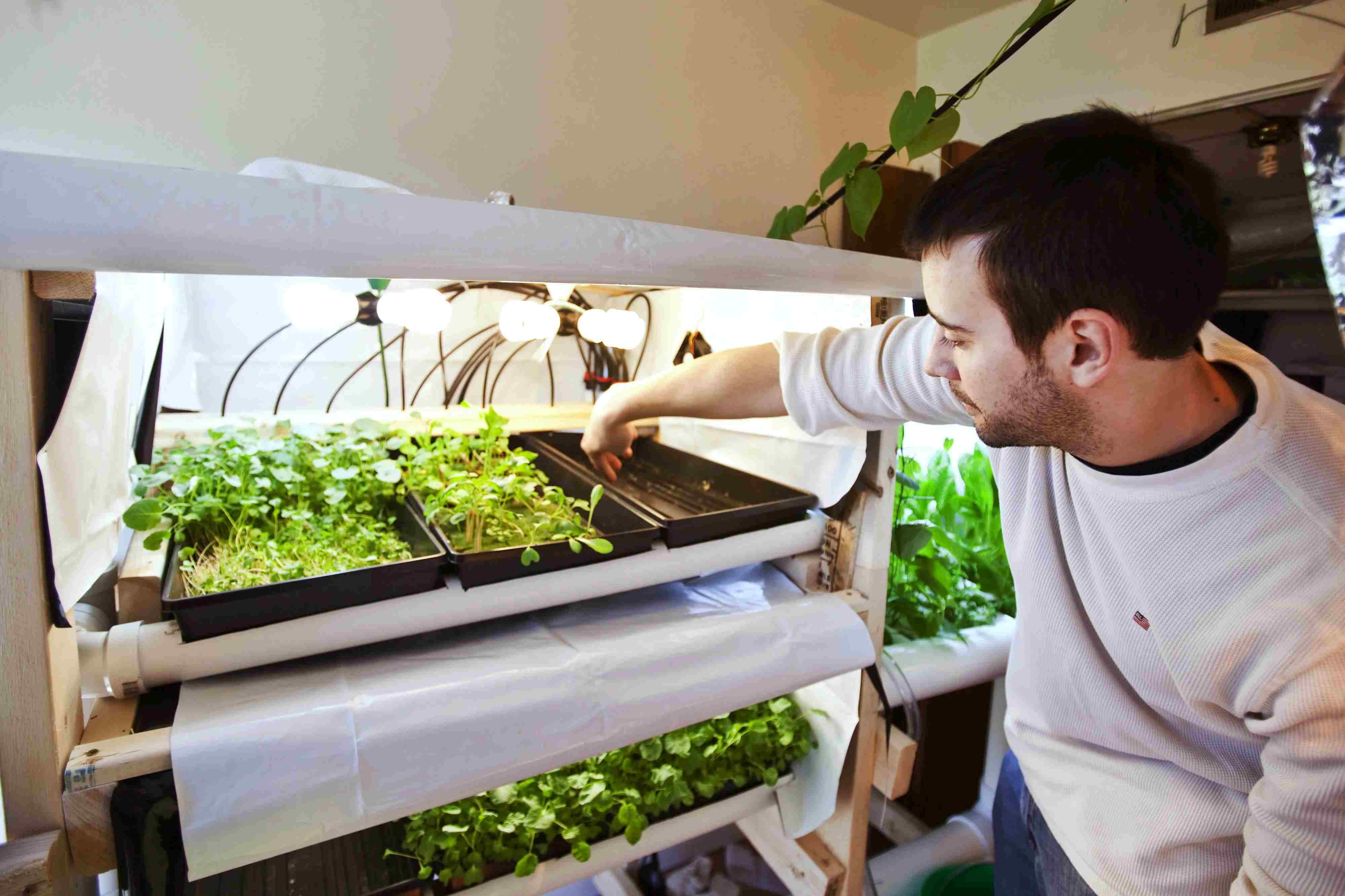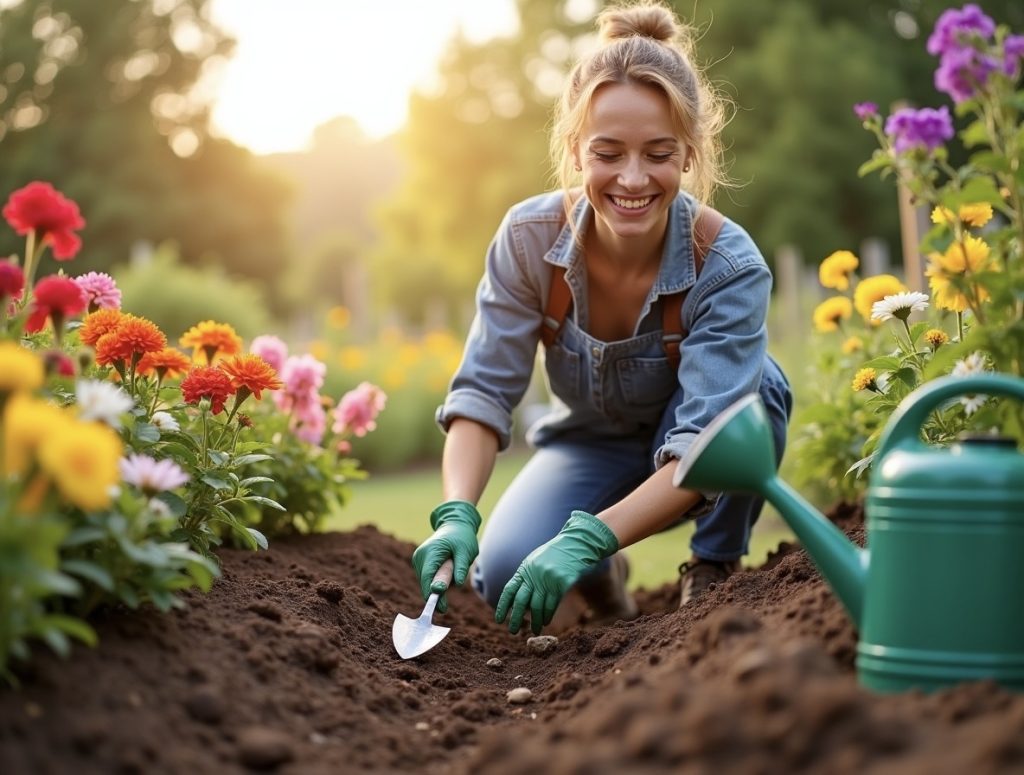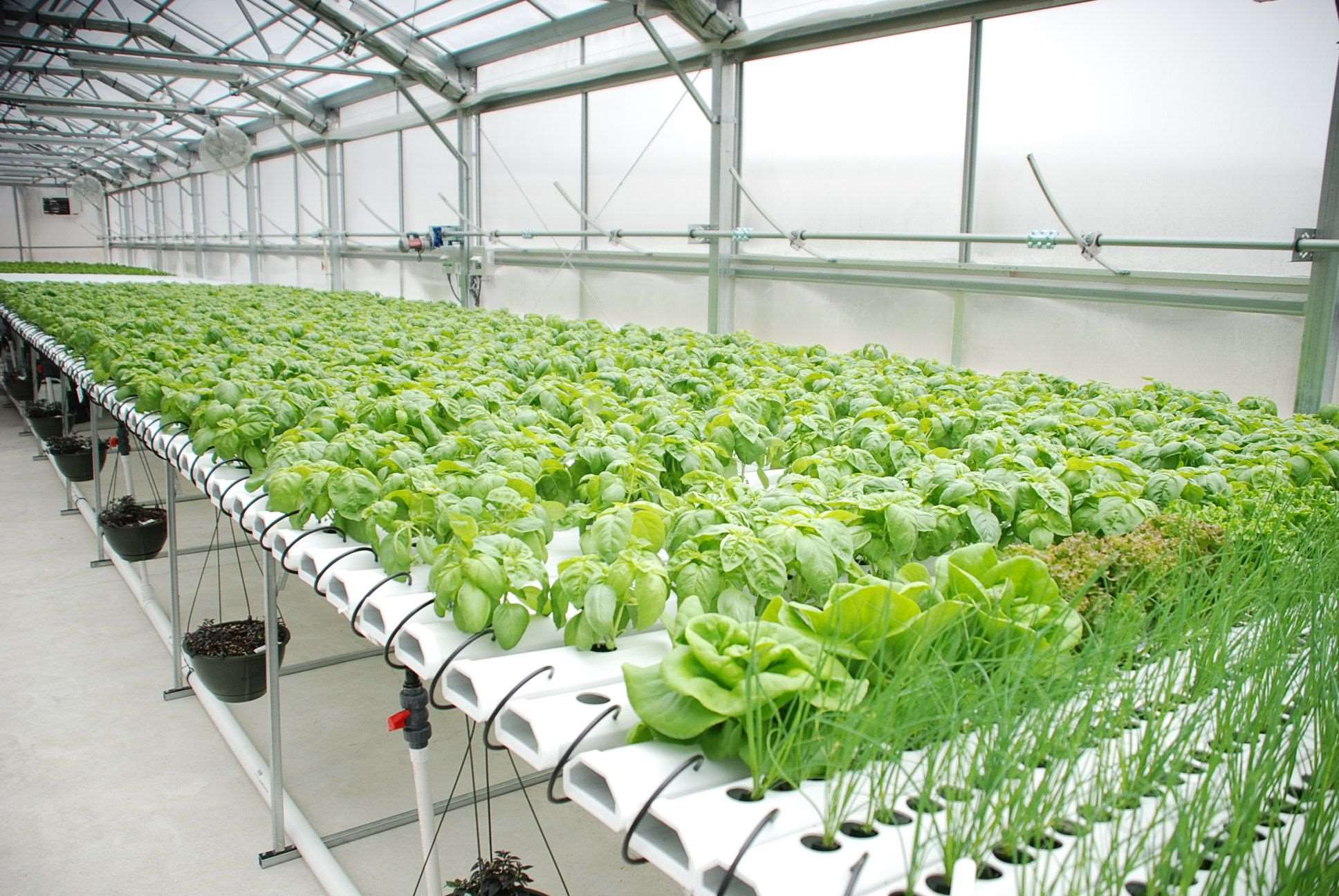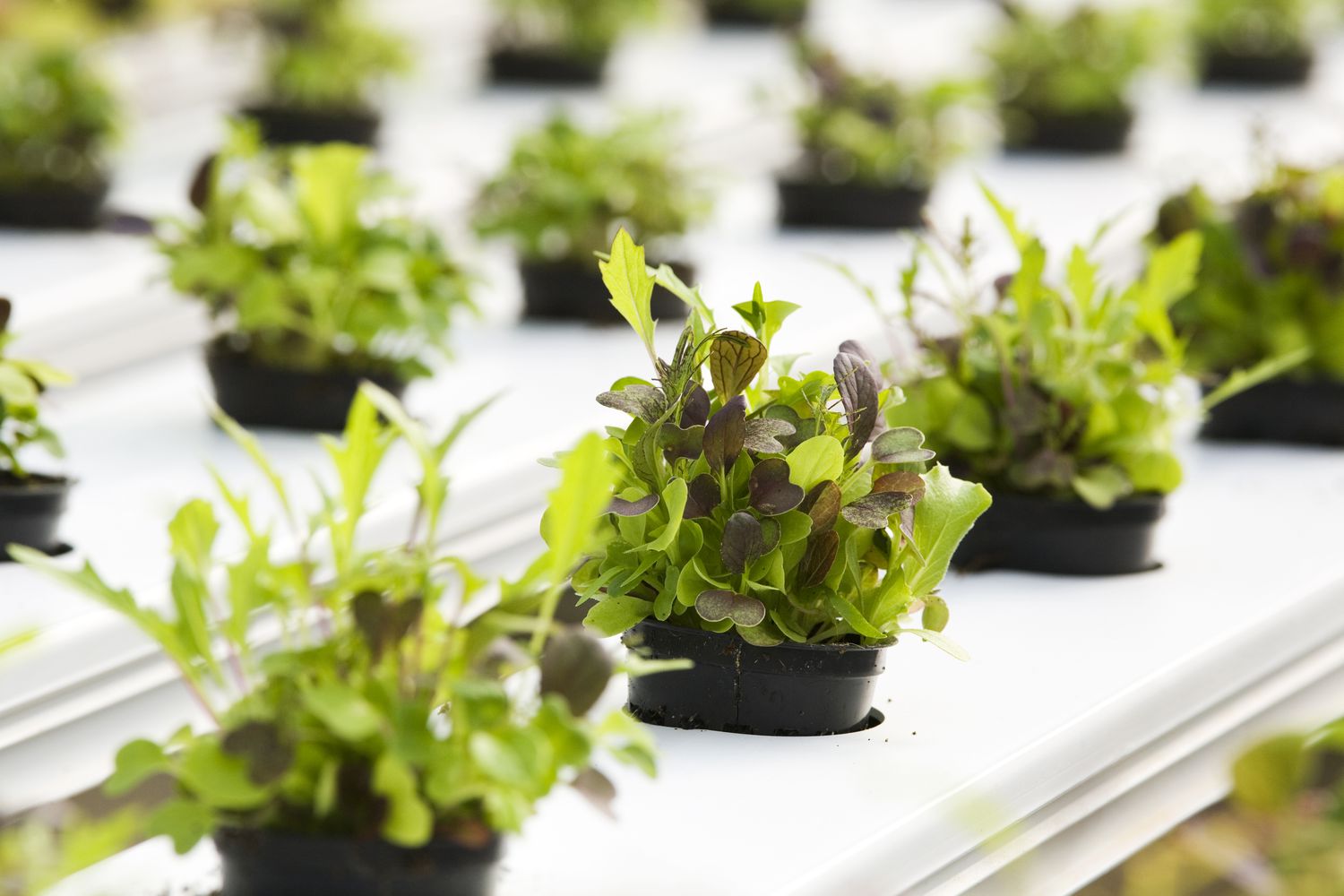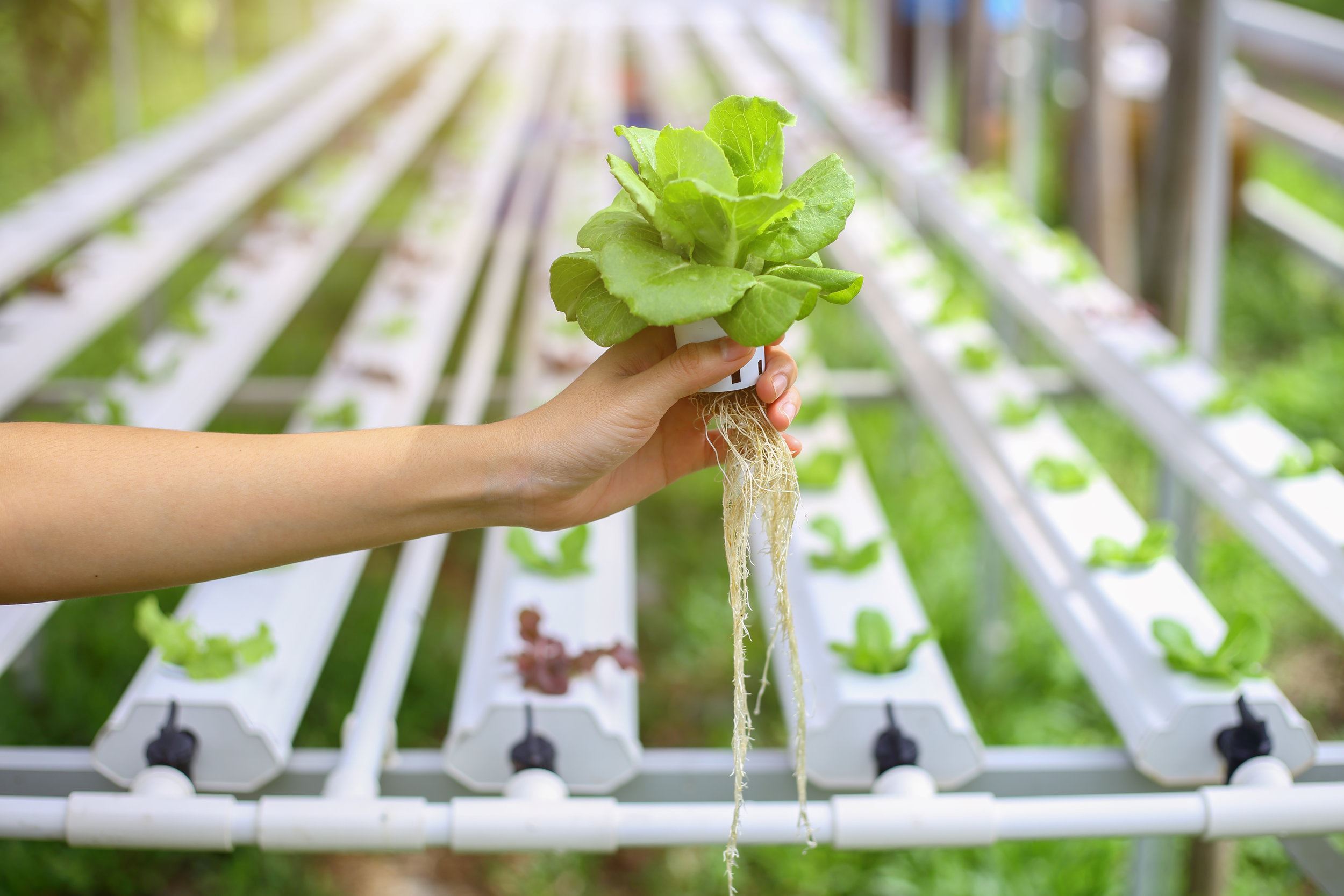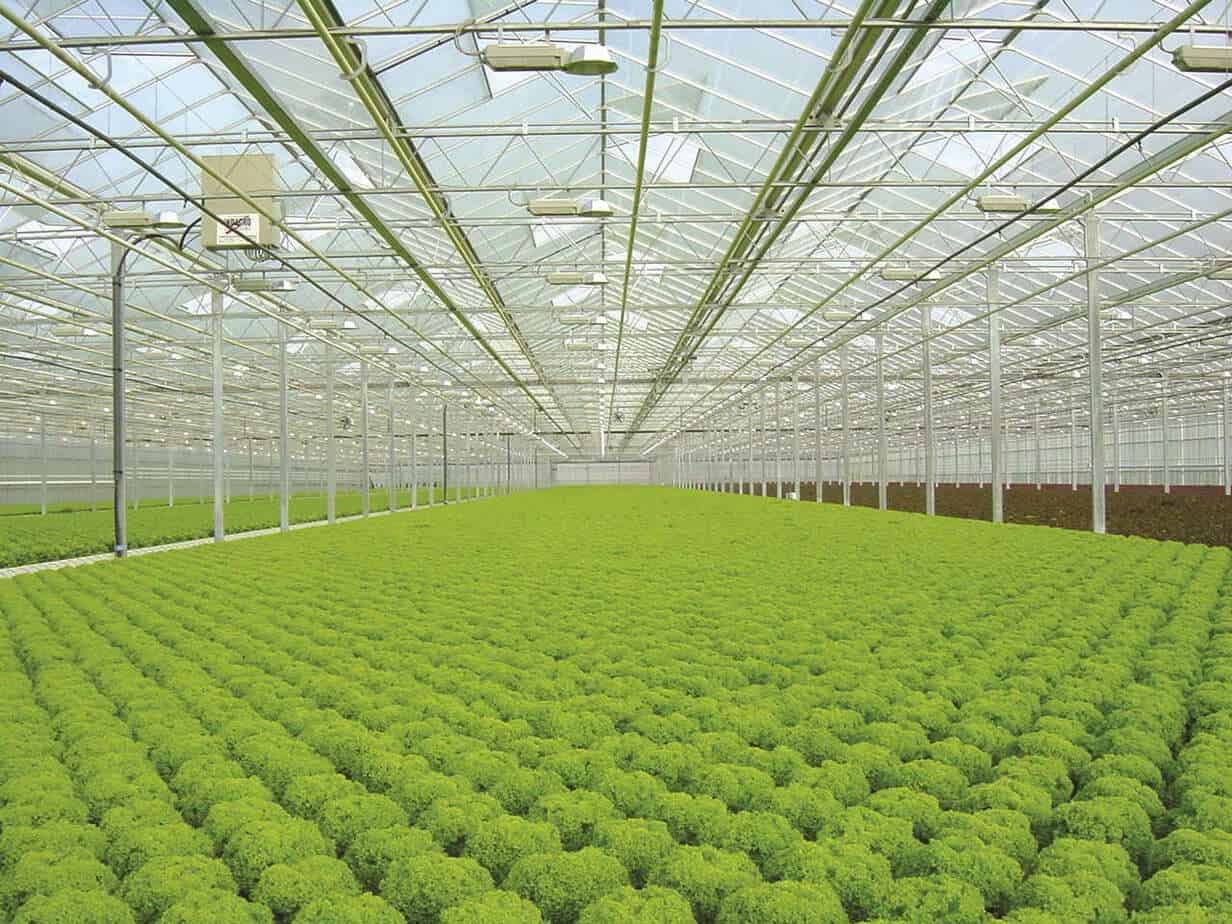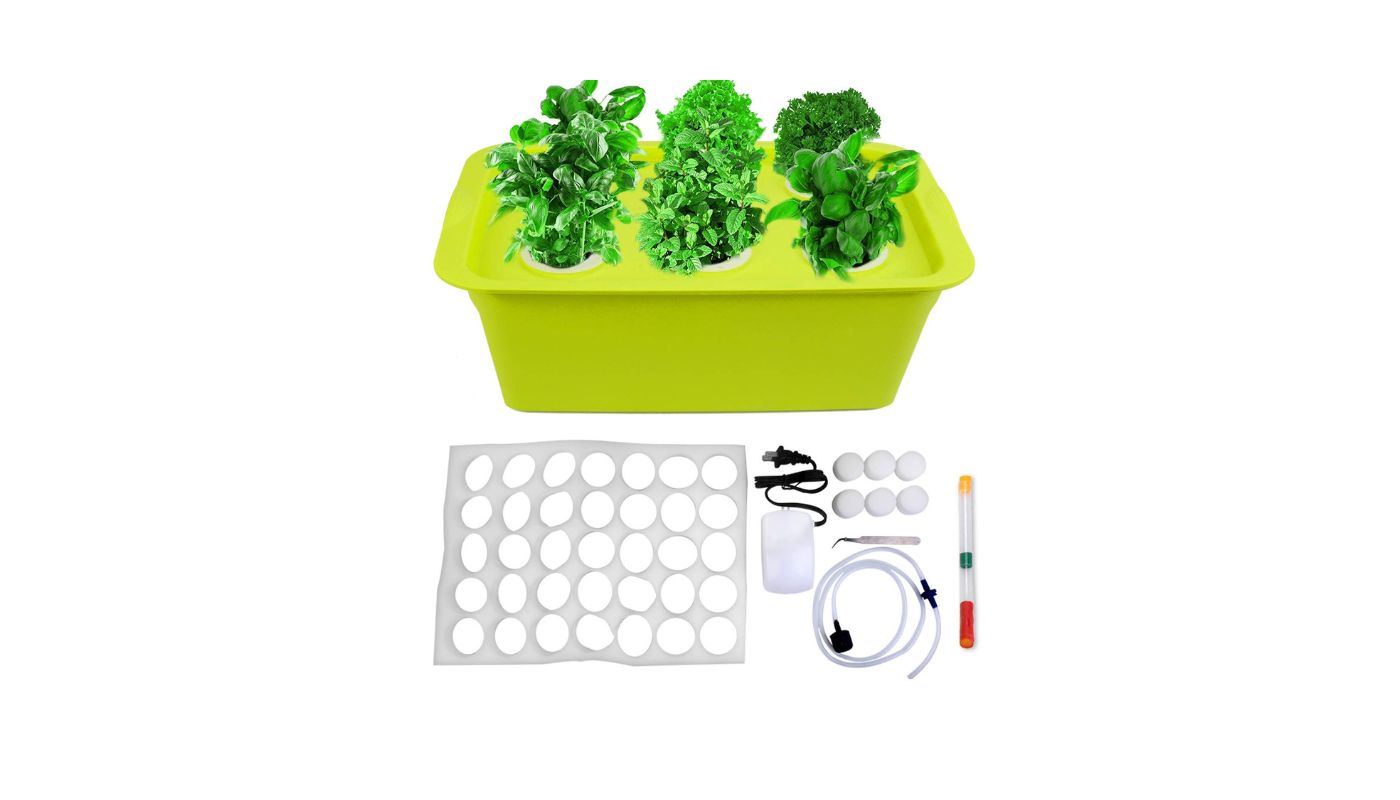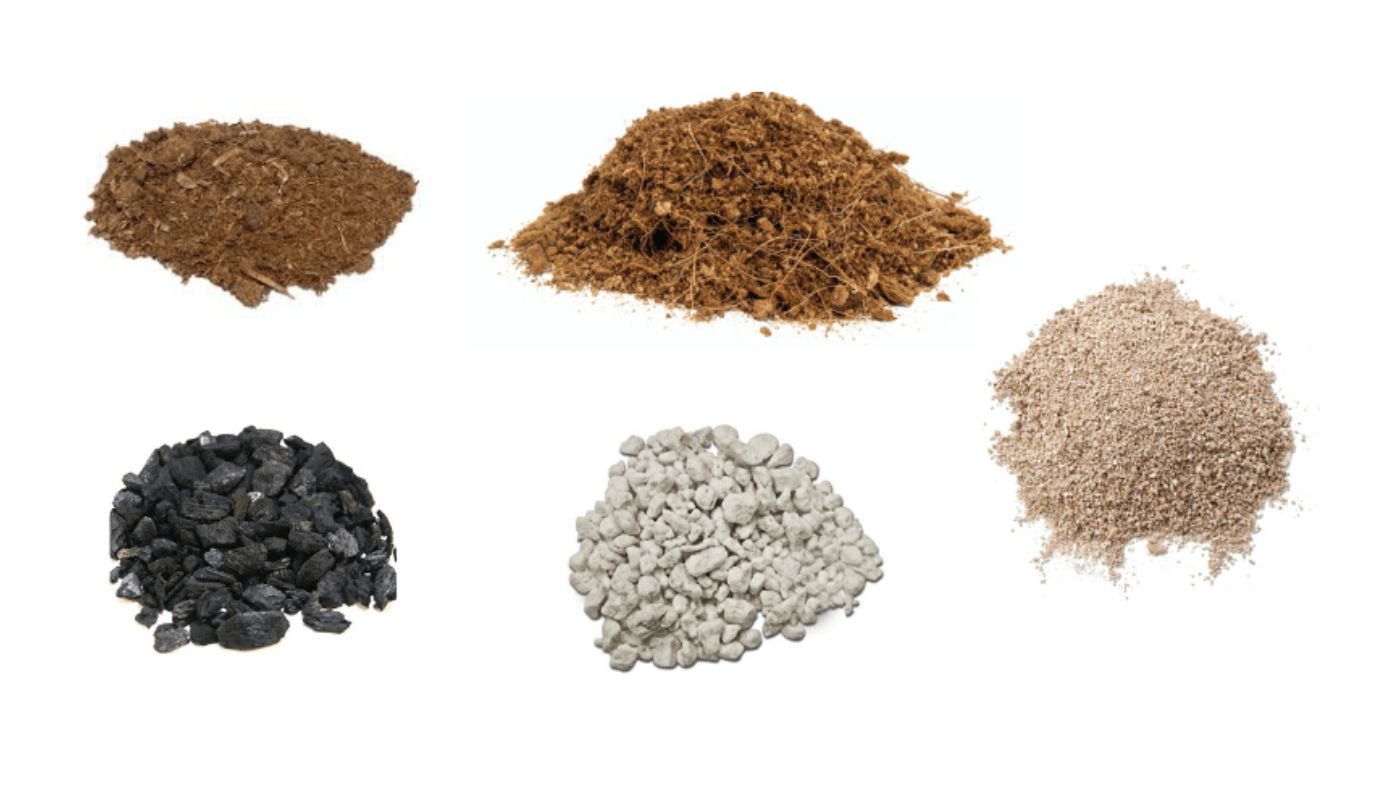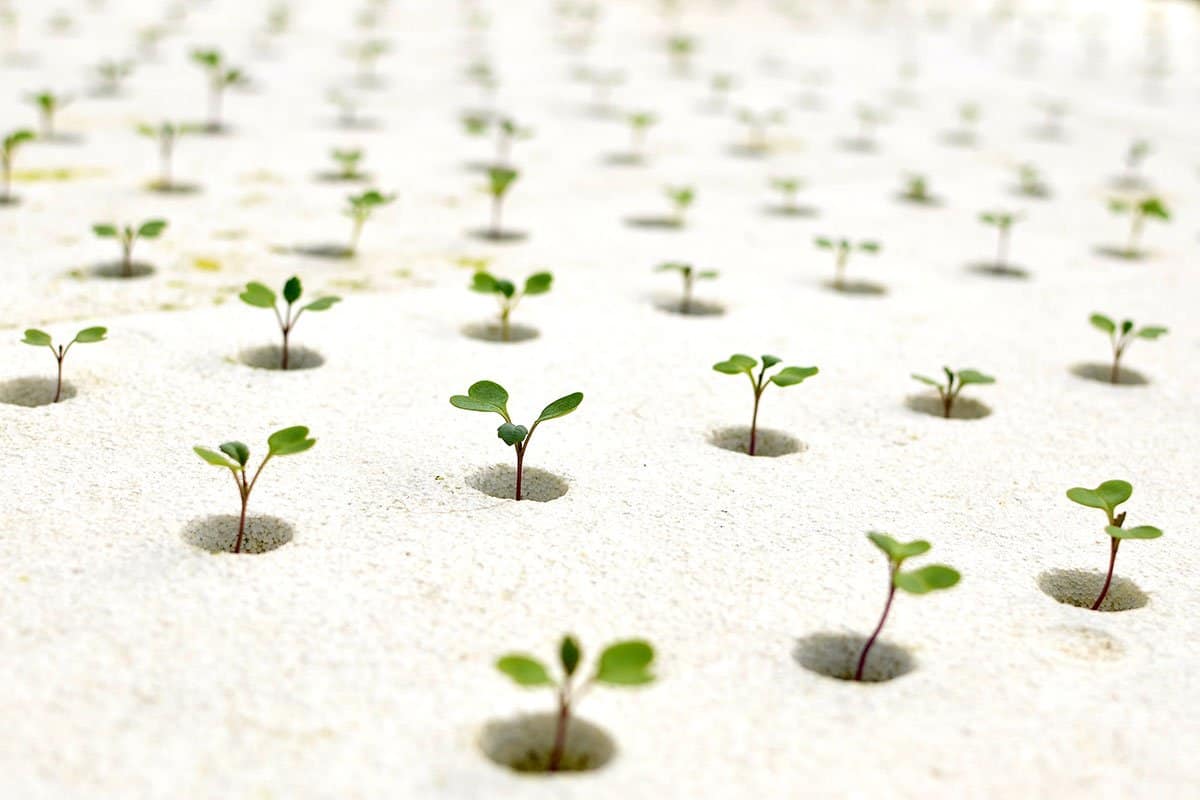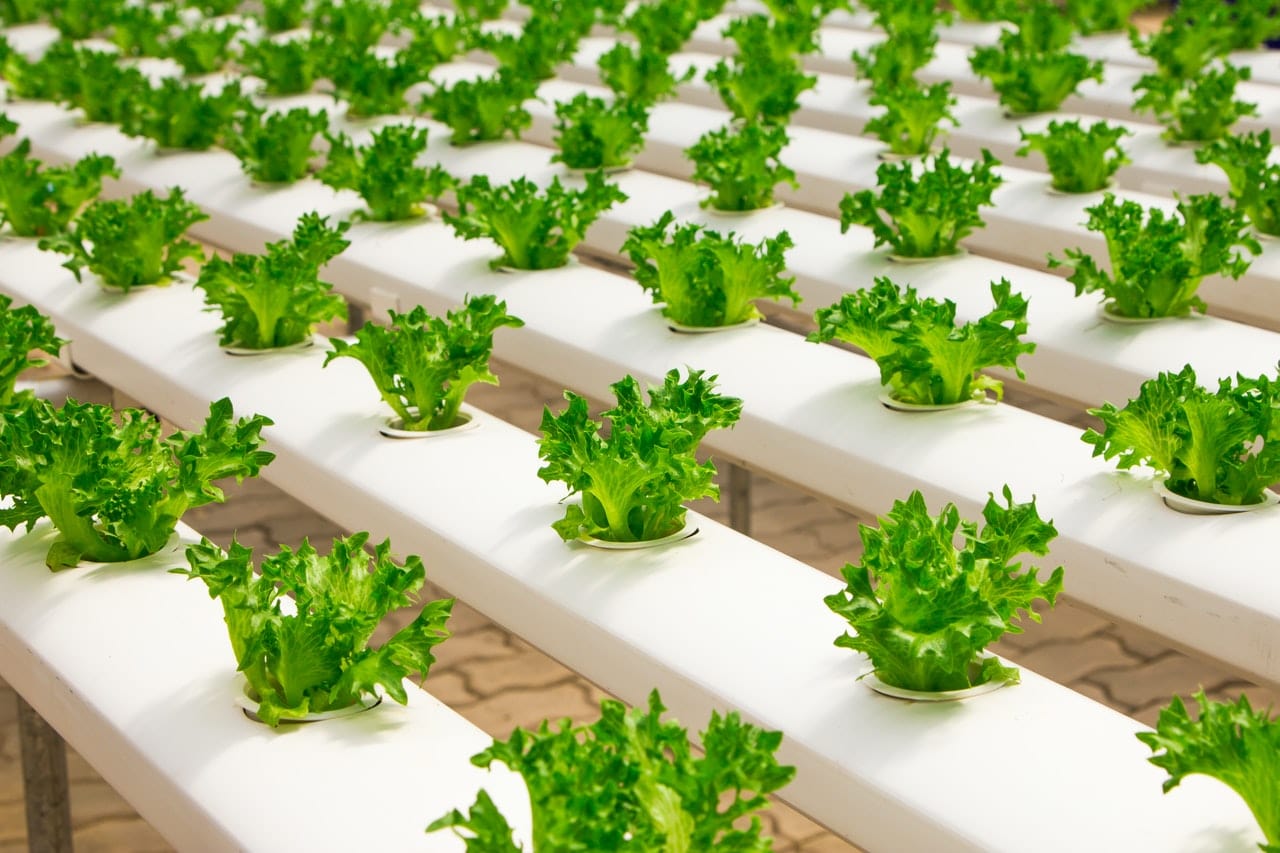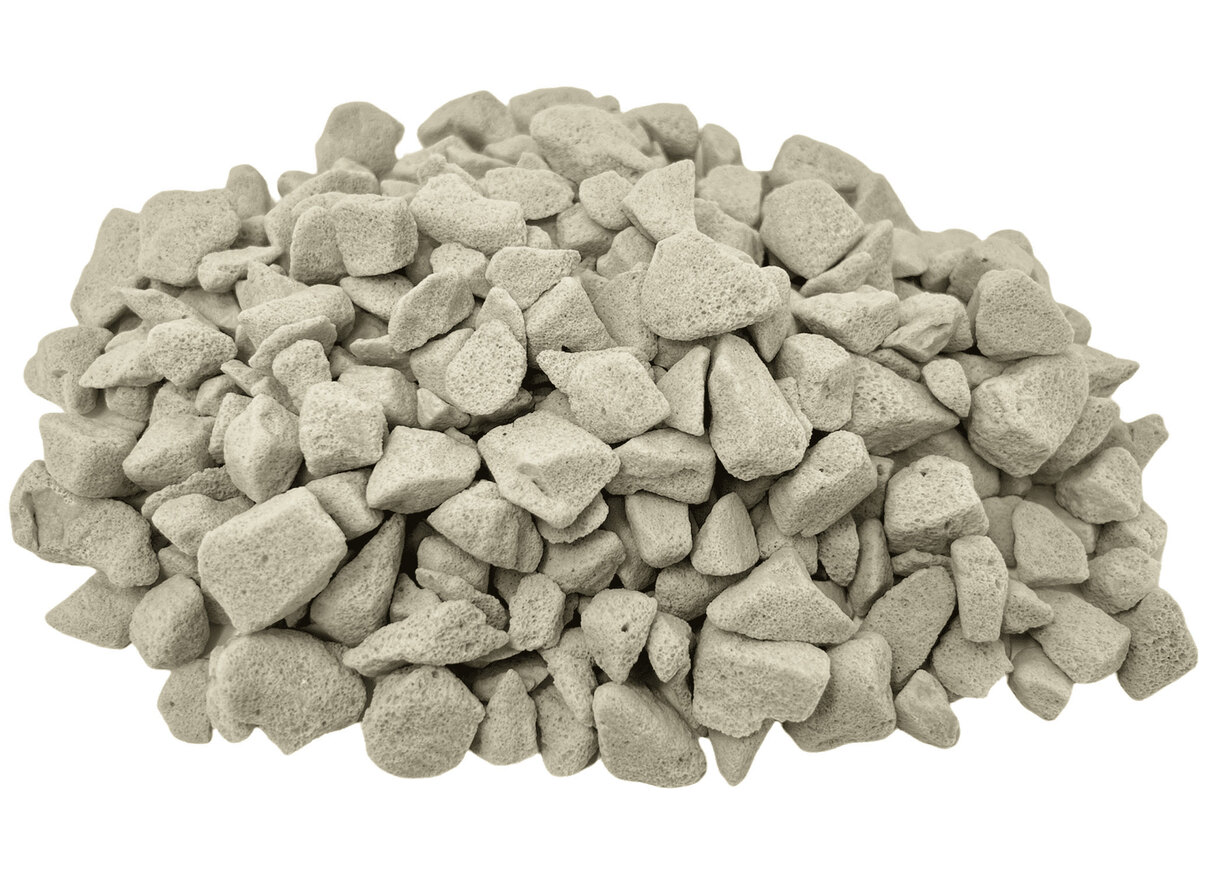(Many of the links in this article redirect to a specific reviewed product. Your purchase of these products through affiliate links helps to generate commission for Chicagolandgardening.com, at no extra cost. Learn more)
How To Grow With Hydroponics
Introduction
Welcome to the world of hydroponics, where you can grow plants without the need for soil. As a revolutionary way of gardening, hydroponics offers numerous benefits and opportunities for both hobbyists and commercial growers alike. Whether you have limited space, poor soil quality, or simply want to explore a more efficient and sustainable method of cultivation, hydroponics could be the answer you’ve been looking for.
Hydroponics is the practice of growing plants in a nutrient-rich water solution, with the roots suspended in a growing medium or directly in water. Instead of relying on soil to provide nutrients, hydroponic systems deliver a carefully balanced mixture of water and nutrients directly to the roots, allowing plants to thrive in an optimal environment.
With hydroponics, you have greater control over the growing conditions, including temperature, humidity, nutrient levels, and pH balance, resulting in accelerated growth and higher yields. Plus, since hydroponic systems can be set up indoors or in small spaces, they offer flexibility and accessibility to urban gardeners, apartment dwellers, and those with limited outdoor areas.
In this comprehensive guide, we will explore the world of hydroponics and provide you with the knowledge and tools you need to successfully grow your own plants using this innovative method. From choosing the right hydroponic system and essential equipment to selecting suitable plants and maintaining optimal growing conditions, we will cover it all.
So, if you’re ready to embark on an exciting journey of growing plants with hydroponics, let’s dive right in and discover the wonders this technique has to offer!
What is Hydroponics?
Hydroponics is a method of growing plants without the use of soil. Instead, plants are grown in a nutrient-rich water solution that provides all the essential elements necessary for their growth. The word “hydroponics” is derived from the Greek words “hydro” meaning water and “ponos” meaning labor, emphasizing the importance of water in this cultivation technique.
In a hydroponic system, plants’ roots are either suspended in the nutrient solution, supported by an inert medium such as perlite, vermiculite, or coconut coir, or provided with a constant flow of nutrient-rich water. The water in these systems is often recycled to minimize waste and maintain sustainability.
Hydroponics offers several advantages over traditional soil-based gardening. First and foremost, it allows for optimal control over the growing conditions, enabling growers to maximize the plant’s potential. Since the nutrients are directly delivered to the roots, plants can absorb them more efficiently, resulting in faster growth and higher yields.
Furthermore, hydroponics eliminates many of the common limitations and challenges associated with soil-based cultivation. It eliminates the risk of soil-borne diseases and pests, as there is no soil to harbor them. This aspect of hydroponics makes it a particularly attractive option for urban gardeners or those with limited outdoor space.
Another benefit of hydroponics is its water efficiency. Compared to traditional soil-based gardening, it requires significantly less water since the nutrient solution is delivered directly to the plant’s roots. With the increasing concern over water scarcity, hydroponics presents a sustainable approach to cultivation.
Hydroponics also offers the flexibility to grow plants year-round, regardless of the weather conditions or seasonal limitations. This allows for a continuous harvest and the opportunity to cultivate a wide variety of crops throughout the year.
Overall, hydroponics is a modern and innovative approach to gardening that offers numerous advantages. By providing plants with a controlled and optimized environment, hydroponics allows for more efficient and sustainable cultivation, making it an appealing choice for both hobbyists and commercial growers.
Benefits of Hydroponics
Hydroponics offers a range of benefits that make it an attractive option for gardeners and farmers seeking an efficient and sustainable cultivation method. Let’s delve into some of the key advantages of hydroponic gardening:
- Water Efficiency: Hydroponics is incredibly water-efficient compared to traditional soil-based gardening. With hydroponics, water is delivered directly to the plant’s roots, reducing water wastage through evaporation and runoff. On average, hydroponics uses about 90% less water than conventional soil-based farming methods.
- Optimal Nutrient Delivery: In a hydroponic system, plants receive a tailored nutrient solution directly to their roots. This allows for precise control over nutrient levels, ensuring that plants receive the essential elements they need for healthy growth. With soil-based gardening, nutrients may become unevenly distributed, making it difficult to provide plants with optimal nutrition.
- Faster Growth and Higher Yields: Hydroponic plants typically experience faster growth rates compared to those grown in soil. The controlled environment provided by hydroponics allows plants to focus their energy on growth, leading to larger, healthier plants. Additionally, the optimal nutrient delivery and consistent growing conditions contribute to higher yields, allowing growers to maximize their harvests.
- No Soil-Borne Diseases and Pests: By eliminating the need for soil, hydroponics reduces the risk of soil-borne diseases and pests. Soil can often harbor pathogens and pests that can damage or destroy plants. With hydroponics, growers can avoid these challenges, resulting in healthier plants and reducing the need for pesticides and fungicides.
- Year-Round Cultivation: Hydroponics allows for year-round cultivation, regardless of climate or seasonal limitations. With controlled environment systems, growers can create the ideal conditions for their plants, ensuring continuous growth and harvest. This provides gardeners with the opportunity to enjoy fresh produce throughout the year and commercial farmers with a reliable and consistent supply of crops.
- Space Efficiency: Hydroponics is an excellent option for those with limited space. With vertical farming systems and compact setups, hydroponics allows for maximum space utilization. This makes it ideal for urban gardeners, apartment dwellers, and those wanting to make the most of their available area.
- Sustainable and Eco-Friendly: Hydroponics is a sustainable cultivation method that minimizes environmental impact. Its water efficiency, reduced chemical usage, and elimination of soil erosion contribute to a more eco-friendly approach to gardening. Additionally, hydroponics systems can be powered by renewable energy sources, further reducing the carbon footprint.
These are just a few of the many benefits that hydroponics offers. Whether you’re a passionate hobbyist or a commercial grower, hydroponics provides a reliable and efficient way to cultivate a wide variety of plants while minimizing resources and maximizing yields.
Getting Started with Hydroponics
Starting a hydroponic garden may seem daunting at first, but with the right guidance, it can be a rewarding and fulfilling experience. Here are the key steps to get you started:
- Educate Yourself: Before diving into hydroponics, take the time to learn about the different systems, techniques, and crops suitable for hydroponic gardening. There are various resources available, including books, online tutorials, and forums where you can gain valuable insights and knowledge.
- Choose a Growing System: There are several types of hydroponic systems available, such as deep water culture, nutrient film technique, and drip irrigation. Each system has its own advantages and considerations. Consider factors such as space availability, cost, and complexity when selecting the right system for your needs.
- Set Up Your Growing Space: Decide whether you’ll be growing indoors or outdoors. If indoors, ensure you have adequate space, proper lighting, and ventilation. If outdoors, choose a suitable location that offers ample sunlight exposure.
- Acquire Essential Equipment: Invest in the necessary equipment and materials to set up your hydroponic system. This may include grow lights, reservoirs, pumps, pH meters, nutrient solutions, and growing mediums. Remember to choose high-quality equipment for optimal results.
- Choose Suitable Plants: Select plants that are well-suited for hydroponic cultivation. Leafy greens, herbs, tomatoes, peppers, and strawberries are popular choices. Consider factors such as space requirements, light intensity, and nutrient demands when making your plant selection.
- Prepare and Maintain the System: Follow the instructions provided with your chosen hydroponic system for setup and maintenance. Ensure that the pH levels and nutrient concentrations are maintained within the appropriate ranges for your plants. Regularly monitor and adjust these parameters to ensure optimal growth.
- Monitor and Manage Pest and Disease: Although hydroponics reduces the risk of soil-borne pests and diseases, it’s important to remain vigilant. Inspect your plants regularly and take immediate action at the first sign of any pest or disease. Implement integrated pest management strategies, such as biological controls or organic pesticides, to protect your plants.
- Harvest and Enjoy: Once your plants have reached maturity, it’s time to harvest and enjoy the fruits of your labor. Harvesting methods may vary depending on the plant, so follow specific guidelines for each crop. Remember to savor the fresh flavors of your homegrown produce!
By following these steps, you’ll be well on your way to setting up and maintaining your own hydroponic garden. Remember, like any form of gardening, hydroponics requires patience, attention to detail, and a willingness to learn and adapt. Embrace the process and enjoy the journey of growing your own plants in a sustainable and efficient way.
Choosing the Right Hydroponic System
When starting with hydroponics, selecting the right system is crucial to the success of your garden. There are various hydroponic systems available, each with its own advantages and considerations. Here are some key factors to consider when choosing a hydroponic system:
- Space Availability: Evaluate the space you have available for your hydroponic garden. Consider whether you’ll be growing indoors or outdoors, and determine the dimensions and layout of your growing area. This will help you determine which system is most suitable for your space limitations.
- Complexity: Consider your level of experience and comfort with hydroponics. Some systems, like deep water culture or nutrient film technique, are relatively simple and easy to set up, making them ideal for beginners. Others, such as aeroponics or ebb and flow, may require more advanced knowledge and maintenance.
- Cost: Evaluate your budget for setting up your hydroponic system. Different systems have varying costs, depending on factors such as the size, complexity, and equipment required. Keep in mind that while some systems may have a higher upfront cost, they may result in better long-term efficiency and higher yields.
- Plant Selection: Consider the specific plants you intend to grow. Some plants, like leafy greens or herbs, thrive in systems that provide constant access to the nutrient solution, such as deep water culture or nutrient film technique. Others, like tomatoes or cucumbers, may require a more versatile system like an ebb and flow or drip irrigation. Select a system that suits the specific needs of your chosen crops.
- Grow Space Configuration: Consider the shape and layout of your growing area. Some hydroponic systems are more adaptable to vertical gardening, allowing for efficient use of space. Others are better suited for horizontal setups. Make sure the system you choose fits well within your configuration to maximize space utilization.
- Maintenance and Monitoring: Assess the amount of time and effort you’re willing to invest in maintaining your hydroponic system. Some systems require more frequent monitoring of pH levels, nutrient concentrations, or water levels, while others have automated features that simplify maintenance. Choose a system that aligns with your availability and willingness to dedicate time to your garden.
- Sustainability: Consider the sustainability and eco-friendliness of the system. Look for systems that promote water conservation, energy efficiency, and minimal waste. Some systems, such as recirculating systems or aeroponics, use less water compared to others. Additionally, systems powered by renewable energy sources reduce environmental impact.
By carefully considering these factors, you can choose the hydroponic system that best suits your needs and goals. Remember, there is no one-size-fits-all solution, and what works for one grower may not work for another. Experimentation and adaptation are key as you explore and find the system that aligns with your preferences and growing objectives.
Essential Equipment for Hydroponics
Setting up a successful hydroponic system requires specific equipment to create an optimal growing environment for your plants. While the exact equipment needed may vary depending on the chosen system and plant selection, here are some essential items for hydroponics:
- Growing System: Choose the appropriate hydroponic system for your needs, such as deep water culture, nutrient film technique, ebb and flow, or aeroponics. Each system has its own requirements and setup instructions.
- Growing Containers: Depending on your system, you may need containers to hold the plants and nutrient solution. These can include net pots, grow trays, or grow beds. Ensure the containers are sturdy and compatible with your chosen system.
- Lighting: If you’re growing plants indoors or in a location with insufficient natural sunlight, you will need to invest in grow lights. LED or high-intensity discharge (HID) lights are commonly used to provide the necessary light spectrum for optimal plant growth.
- Substrate or Growing Medium: Some hydroponic systems require a growing medium or substrate to support the plants’ roots. This can include materials like rockwool, perlite, vermiculite, or coconut coir. The choice of substrate depends on the system and the crops being grown.
- Water Tank or Reservoir: A water tank or reservoir is needed to hold the nutrient-rich water solution. It should be durable, easy to clean, and appropriately sized to accommodate your system’s water requirements.
- Pumps: Depending on the hydroponic system, you may need pumps to circulate the nutrient solution or provide oxygenation. Submersible pumps or air pumps are commonly used to maintain proper water flow and oxygen levels in the system.
- pH and EC Meters: pH and electrical conductivity (EC) meters are essential for monitoring and adjusting the nutrient solution’s acidity (pH level) and nutrient concentration (EC level). These meters help ensure that the pH and nutrient levels are within the optimal range for plant growth.
- Nutrient Solutions: Hydroponic plants require specific nutrient solutions to provide them with the necessary minerals for growth. Choose nutrient solutions that are formulated for hydroponic use and follow the instructions regarding mixing and application rates.
- Timers: Timers are used to automate the lighting and watering cycles in hydroponic systems. They ensure that plants receive the required amount of light and nutrient solution at the appropriate intervals, promoting optimal growth and eliminating the need for manual monitoring.
- Support Structures: Some crops, such as tomatoes or cucumbers, require support structures like trellises or stakes to hold and guide their growth. Plan and install these structures in your hydroponic setup to provide necessary support for your plants.
- Monitoring Tools: In addition to pH and EC meters, other monitoring tools such as thermometers and hygrometers may be necessary to keep track of temperature and humidity levels in your growing environment. These tools help ensure that the conditions remain within the optimal range for plant growth.
While these are the essential equipment items for hydroponics, depending on the complexity of your system and your specific requirements, additional equipment may be needed. Always consult the instructions for your chosen hydroponic system and consider the unique needs of your plants to determine the equipment necessary for your successful hydroponic garden.
Selecting the Right Plants for Hydroponics
One of the great advantages of hydroponics is the ability to grow a wide variety of plants in a controlled environment. However, not all plants thrive equally well in a hydroponic system. When choosing plants for your hydroponic garden, consider the following factors:
- Growth Habit: Consider the natural growth habit of the plant. Certain plants, like leafy greens and herbs, have a compact form and can thrive in a variety of hydroponic systems. Others, such as vining plants like tomatoes or cucumbers, may require larger support structures or systems that accommodate their climbing nature.
- Nutrient Requirements: Different plants have varying nutrient requirements. Research the specific nutrient needs of the plants you wish to grow and ensure that your hydroponic system can provide those essential elements. Some plants may require higher nitrogen levels, while others may have specific micronutrient requirements.
- Space Availability: Consider the space available in your hydroponic system. Some plants, like salad greens or microgreens, have a small footprint and can be grown densely. Others, such as fruiting plants or larger herbs, may require more space to spread their roots and foliage.
- Lighting Requirements: Different plants require differing levels of light intensity and duration. Assess the lighting capabilities of your hydroponic setup and choose plants that can thrive within those parameters. Leafy greens generally require less light than fruiting plants, which often need more intense lighting for optimal growth.
- Growth Cycle: Consider the length of the plant’s growth cycle and its compatibility with your desired harvest schedule. Some plants, like lettuce or herbs, have a shorter growth cycle and can be harvested multiple times. Others, like fruiting vegetables, have a longer growth cycle and may require more patience and space.
- Climate Adaptability: Hydroponics allows you to control the climate, but some plants are inherently better suited for hydroponic environments. Consider plants that thrive in consistent temperature and humidity conditions rather than those that require extreme heat or cold to grow successfully.
- Personal Preference: Lastly, factor in your personal preference. Choose plants that you enjoy consuming and that align with your culinary or nutritional needs. Growing plants that you are passionate about will make the process more enjoyable and fulfilling.
Popular choices for hydroponic gardening include leafy greens like lettuce, kale, or spinach, culinary herbs like basil or cilantro, and compact fruiting plants like cherry tomatoes or strawberries. However, feel free to explore a wide range of crops and experiment with less common options to discover what works best for you.
Remember, the beauty of hydroponics lies in its versatility. With the right system and proper care, you can grow a bountiful harvest of your favorite plants throughout the year, regardless of traditional growing seasons or soil limitations.
Nutrient Solutions for Hydroponics
In a hydroponic system, providing plants with a balanced and carefully tailored nutrient solution is essential for their growth and development. Unlike traditional soil-based gardening, where plants draw nutrients from the soil, hydroponics relies on the delivery of nutrient solutions directly to the plant’s roots. Here’s what you need to know about nutrient solutions for hydroponics:
Composition: A nutrient solution is a mixture of essential elements that plants need for proper growth. These include macronutrients such as nitrogen (N), phosphorus (P), and potassium (K), as well as micronutrients like iron (Fe), zinc (Zn), and manganese (Mn). The specific ratios and concentrations of these nutrients may vary depending on the stage of plant growth and the type of plants being cultivated.
Pre-made vs. DIY: Nutrient solutions are available in pre-mixed formulas, making it convenient to establish the right nutrient balance for your plants. These commercial solutions are often tailored for different stages of plant growth. However, some hydroponic gardeners choose to create their nutrient solutions by blending different fertilizer salts to achieve the desired nutrient ratios. DIY nutrient solutions require careful measurement and monitoring to ensure proper nutrient balance.
pH and EC Levels: Maintaining the appropriate pH and electrical conductivity (EC) levels of the nutrient solution is crucial for nutrient uptake by plants. pH measures the acidity or alkalinity of the solution, while EC indicates the nutrient concentration. Different plants prefer different pH and EC ranges, so it’s crucial to monitor and adjust these levels regularly using pH and EC meters to avoid nutrient deficiencies or toxicities.
Application and Delivery: Nutrient solutions are delivered to the plants through various hydroponic systems. Depending on the system you choose, the nutrient solution can be recirculated, flowing continuously over the roots, or delivered in timed intervals. Consistency and uniformity in nutrient delivery are critical to ensure plants receive the necessary nutrients for optimal growth.
Monitoring and Adjusting: As plants grow and consume nutrients, it’s important to monitor and adjust the nutrient solution accordingly. Regularly test the pH and EC levels using appropriate meters and make necessary adjustments as indicated by the specific requirements of your plants. This ensures that plants receive an optimal nutrient supply at all stages of growth.
Organic vs. Synthetic: Hydroponic nutrient solutions can be either organic or synthetic. Organic options rely on natural and sustainable sources, while synthetic options are chemically formulated for precise nutrient delivery. The choice between organic and synthetic depends on your personal preferences, the specific requirements of your plants, and your sustainability goals.
Quality and Source: It’s important to select high-quality nutrient solutions from reputable suppliers to ensure their efficacy and safety. Look for solutions that are specifically formulated for hydroponic use, as they will typically contain the necessary minerals in the proper balance for optimal plant growth.
Monitor Plant Nutrient Status: Even with a well-formulated nutrient solution, it’s important to monitor your plants for any signs of nutrient deficiencies or imbalances. Common indicators include yellowing leaves, stunted growth, or poor fruit development. Adjust the nutrient solution accordingly to address any deficiencies or imbalances that may arise.
Remember, the key to successful hydroponic gardening is to provide plants with a balanced and carefully monitored nutrient solution tailored to their specific needs. Regular monitoring, adjustment, and attention to pH and EC levels will help ensure your plants receive the essential nutrients they require to thrive in a soilless environment.
Maintaining Optimal Growing Conditions
In hydroponics, maintaining optimal growing conditions is crucial for the success of your plants. A controlled environment allows you to provide the ideal conditions for plant growth, ensuring they have everything they need to thrive. Here are some key factors to consider when maintaining optimal growing conditions in your hydroponic garden:
- Lighting: Provide adequate lighting for your plants, especially if they are grown indoors or in a location with limited natural sunlight. LED or high-intensity discharge (HID) lights are commonly used in hydroponics to deliver the specific light spectrum required for photosynthesis. Adjust the duration and intensity of light based on the specific needs of your plants and their growth stages.
- Temperature: Maintain a consistent temperature range that is suitable for your plants. Most plants thrive in temperatures between 65°F and 75°F (18°C to 24°C). Avoid temperature extremes and fluctuations, as they can stress plants and negatively impact growth. Use ventilation, fans, or air conditioning to regulate the temperature, especially in enclosed growing spaces.
- Humidity: Monitor and control humidity levels to prevent excessive moisture or dryness. Different plants have different humidity preferences, but in general, a humidity level between 50% and 70% is suitable for most crops. Use humidifiers, dehumidifiers, or ventilation to adjust humidity levels as needed.
- Air Circulation: Maintain proper air circulation to provide adequate oxygen to the plants’ roots and promote transpiration. Use fans or air pumps to ensure a gentle breeze around the plants. This not only helps prevent stagnant air but also strengthens the plant’s stem and reduces the risk of pests and diseases.
- Regularly monitor and maintain the pH and electrical conductivity (EC) levels of the nutrient solution. Different plants have different pH and EC requirements, so check specific guidelines for your chosen crops. Adjust the pH level using pH-up or pH-down solutions and adjust nutrient concentrations to ensure that plants can absorb nutrients effectively.
- Nutrient Solution: Keep a consistent supply of properly mixed and balanced nutrient solution in your hydroponic system. Periodically check nutrient solution levels and top up as needed. Monitor nutrient solution temperature, as excessively warm solutions can promote the growth of pathogens. Replace the nutrient solution at regular intervals to prevent nutrient imbalances and the buildup of pathogens.
- Cleanliness and Sterilization: Maintain cleanliness in your hydroponic system to prevent the growth of harmful bacteria, fungi, or algae. Regularly clean system components, including reservoirs, pumps, and growing containers. Sterilize your hydroponic equipment before each new crop cycle to minimize the risk of disease transmission.
- Pest and Disease Management: Implement preventive measures to manage pests and diseases in your hydroponic garden. Inspect your plants regularly and take immediate action at the first sign of infestation or disease. Use integrated pest management strategies, such as introducing beneficial insects or using organic pesticides, to control pests without harming plants or the environment.
- Plant Support and Training: Provide support and training for your plants as needed. Use trellises, stakes, or other support structures to help plants grow upright and prevent overcrowding. Regularly prune and trim plants to maintain proper airflow and prevent the spread of diseases.
- Consistent Monitoring and Adjustment: Regularly monitor your plants’ growth, nutrient levels, and overall health. Pay attention to any signs of stress or nutrient deficiencies and make adjustments to the growing conditions as necessary. This includes adjusting lighting, nutrients, humidity, or temperature to meet the evolving needs of your plants.
Maintaining optimal growing conditions in your hydroponic garden requires careful attention to detail and regular monitoring. By providing the ideal environment for your plants, you can ensure healthy growth, maximize yields, and enjoy a successful hydroponic gardening experience.
Common Challenges in Hydroponics and How to Overcome Them
While hydroponics offers many advantages, it does come with its own set of challenges. However, by understanding these challenges and implementing effective solutions, you can overcome them and have a successful hydroponic garden. Here are some common challenges in hydroponics and how to overcome them:
- pH imbalances can occur when the pH of the nutrient solution is incorrect, leading to nutrient deficiencies or toxicities. Regularly monitor the pH levels using a pH meter and adjust the pH using pH-up or pH-down solutions as needed to maintain the optimal range for your plants.
- Root Rot and Diseases: In a hydroponic system, the absence of soil does not eliminate the risk of root rot and disease. To prevent these issues, maintain a clean and sterile system, avoid overwatering, and ensure good airflow around the plants. Consider using beneficial bacteria or fungi that promote healthy root development and help prevent the growth of harmful pathogens.
- Algae Growth: Algae growth in the nutrient solution or growing medium is a common problem in hydroponics. To prevent algae growth, keep the system dark or use opaque containers to limit exposure to light. Regularly sterilize the system components and monitor nutrient solution temperature, as warmer temperatures can promote algae growth.
- Nutrient Deficiencies: Despite your best efforts, nutrient deficiencies can occur in hydroponics. Regularly monitor the nutrient levels in your system and adjust the nutrient solution to address any deficiencies. Adjust the nutrient concentration or consider supplementing with specific nutrients to address the specific needs of your plants.
- Pest Infestations: Pest infestations can still occur in hydroponic gardens, although they are less common compared to traditional soil-based gardens. Inspect your plants regularly and introduce beneficial insects, such as ladybugs or predatory mites, to control pests naturally. In severe cases, consider using organic pesticides specifically formulated for hydroponic use, following the instructions and guidelines carefully.
- Temperature Fluctuations: Fluctuating temperatures can stress plants and affect their growth. Insulate your hydroponic system, if necessary, to maintain a consistent temperature within the optimal range for your plants. Use fans or ventilation systems to remove excess heat and regulate temperature. Consider using temperature control measures such as heaters or cooling devices as needed.
- Inadequate Lighting: Insufficient lighting can result in slow growth or leggy plants. Ensure that your plants receive the appropriate amount and intensity of light for their specific needs. Invest in high-quality grow lights and adjust the duration and distance of the lights based on the growth stage of your plants.
- Over- or Under-Watering: Finding the right balance of water for your plants can be a challenge. Overwatering can lead to root rot, while underwatering can cause nutrient deficiencies and stunted growth. Monitor the moisture levels in your growing medium or root zone and adjust watering frequency accordingly. Consider using automated watering systems or moisture sensors to maintain consistent moisture levels.
- Plant Crowding: Overcrowding plants can lead to poor air circulation and the spread of diseases. Provide enough space for each plant to grow and consider pruning or thinning out crowded plants. Utilize trellises or other support structures to ensure proper spacing and prevent plants from overcrowding their neighbors.
- Operator Error: Finally, the success of your hydroponic garden depends on your knowledge, skills, and attentiveness. Stay informed, educate yourself about hydroponics, and seek guidance if needed. Regularly monitor the health of your plants, nutrient levels, and environmental conditions, making adjustments as necessary to ensure optimal growth.
Remember that challenges are a normal part of the learning process in hydroponics. By staying proactive, maintaining a clean and well-balanced system, and addressing issues promptly, you can overcome these challenges and achieve a thriving and productive hydroponic garden.
Harvesting and Enjoying the Fruits of Your Hydroponic Garden
After months of care and attention, it’s finally time to reap the rewards of your hydroponic garden. Harvesting your homegrown produce is an exciting and fulfilling process. Here are some tips to ensure a successful harvest and fully enjoy the fruits of your labor:
- Timing: Harvest your crops at the right time to ensure optimal flavor and nutrient content. Different plants have different signs of readiness, such as color changes or firmness. Refer to specific harvesting guidelines for each crop to determine the best time for harvest.
- Tools: Use sharp and clean pruners or scissors for harvesting. This helps minimize damage to the plants and prevents the spread of diseases. Harvesting tools should be sanitized between plants to prevent cross-contamination.
- Harvesting Techniques: Depending on the crop, harvesting techniques can vary. For leafy greens, harvest outer leaves as needed, allowing the center leaves to continue growing. For fruiting plants like tomatoes or cucumbers, twist or cut the ripe fruits from the stem, taking care not to damage the plant.
- Post-Harvest Care: Handle the harvested produce with care to avoid bruising or damage. Clean the harvested produce gently to remove any debris or dirt. Remove any damaged or diseased portions before storing or consuming.
- Storage: Store your freshly harvested produce properly to prolong its shelf life. Leafy greens can be stored in the refrigerator in a sealed bag or container to retain freshness. Fruits and vegetables, such as tomatoes or peppers, should be stored at room temperature away from direct sunlight.
- Culinary Delights: Enjoy the delicious taste of your harvest by incorporating it into a variety of dishes. From fresh salads and stir-fries to smoothies and salsas, there are endless possibilities for culinary creations with your homegrown produce.
- Sharing the Bounty: If you have an abundance of harvest, consider sharing with friends, family, or local community members. Spread the joy of homegrown produce and promote sustainable and locally sourced food.
- Continuous Harvest: In many hydroponic systems, certain plants can be harvested multiple times. For leafy greens, harvesting outer leaves allows the center leaves to continue growing. This ensures a continuous supply of fresh produce from your hydroponic garden.
- Reflection and Learning: Take time to reflect on your hydroponic journey. Assess what worked well and areas for improvement. Use this knowledge to enhance future harvests and continue to refine your hydroponic gardening skills.
Harvesting the fruits of your hydroponic garden is not only a rewarding experience but also an opportunity to embrace the joys of sustainable, homegrown food. The taste, freshness, and nutritional value of your hydroponically grown produce will provide a true sense of accomplishment and a deeper connection to the food you consume.
So, savor the flavors, experiment with new recipes, and continue to nurture your hydroponic garden for ongoing enjoyment and a bountiful harvest for years to come.
Conclusion
Hydroponics offers a revolutionary and efficient way to grow plants without the need for soil. With its numerous benefits, such as water efficiency, faster growth, and year-round cultivation, hydroponics has become increasingly popular among gardeners and farmers alike.
In this comprehensive guide, we have explored the world of hydroponics, starting from the basics of what hydroponics is to the essential equipment needed for setting up a hydroponic system. We have discussed the importance of selecting the right plants for hydroponics, understanding nutrient solutions, and maintaining optimal growing conditions.
We have also addressed common challenges that hydroponic gardeners may face and provided practical solutions to overcome them. From pH imbalances to pests and diseases, being prepared and proactive can ensure a successful hydroponic garden.
Lastly, we concluded with a guide on harvesting and enjoying the fruits of your hydroponic garden. From proper timing and techniques for harvesting to post-harvest care and storage, the satisfaction and culinary delights of homegrown produce are within reach.
As you embark on your hydroponic journey, remember to embrace the learning process and be open to experimentation. Hydroponics is a versatile and adaptable method of gardening that offers endless possibilities and opportunities for growth.
Whether you’re a passionate hobbyist exploring the joys of home gardening or a commercial grower seeking more sustainable and efficient cultivation methods, hydroponics has the potential to transform your growing experience.
So, don’t hesitate to dive into the world of hydroponics with enthusiasm and curiosity. With the knowledge and understanding gained from this guide, you are well-equipped to start your own hydroponic garden and enjoy the benefits of fresh, homegrown produce year-round.
Happy growing!
